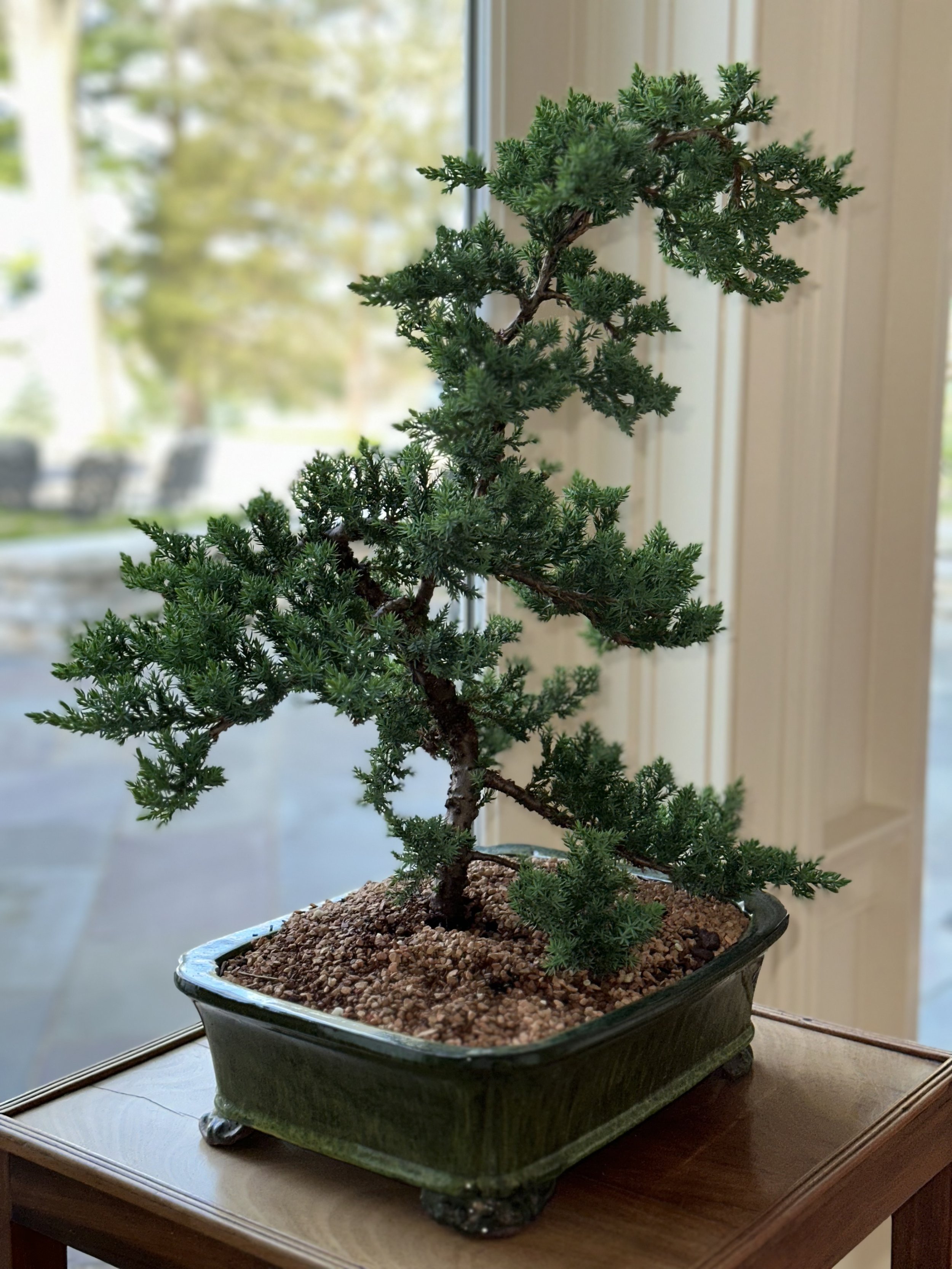Lessons of the Bonsai
Eleven-year-old juniper bonsai tree.
When Michler's Florist delivered this beautiful, eleven-year-old juniper bonsai tree, I almost threw up. There had to be a misunderstanding. I didn't deserve such a generous gift, nor was I capable of caring for it. And after reading the three pages of illustrated instructions that came with it, I felt like someone had left a baby in a basket on my front porch.
There was a lot at stake. The gift was an expression of confidence. Cultivating bonsai trees is an art form that symbolizes patience, reverence for nature, and self-discipline. I hold these principles in high regard, so what does it say about me if I kill the bonsai?
It was like the early days of caring for my first child. I tried to reduce the angst by reading too much, and that led to an insane quest for perfection. I overwatered, under-watered, gave it too much sun, too little sun. I circled the exterior of my house searching for the best place for burial—the only way it could survive a cloudy Lexington winter. I freaked out when I saw a few brown stems, then moved it from room to room, trying to make it happy so it would please stop crying. Oh wait, that was me.
And then one day, we found the right balance, and the tree began to grow. I kept to a strict routine, watched it like a hawk, and when I determined it was fine, I vowed never to touch it or change a thing as long as it stayed alive.
I did not practice the same hands-off philosophy with my actual parenting, even if I wanted to. There were plenty of vulnerable moments when I would have preferred inaction over the dramatic consequences of being a mom. I'm sure there were days when my kids wished they were a bonsai tree.
But I am pleased to announce that two years later, the bonsai continues to thrive and is a statement piece in our home. I enjoy looking at it, but a lingering doubt stifles the joy I should feel when guests admire and comment on the bonsai’s beauty. I tend to skirt around it, or move them along to another room. I feel embarrassed and a little guilty because of the secret: the bonsai grows despite my neglect. It gets water twice a week and roughly 195 partial days of sunshine per year —that's it.
The last time my daughter was home, she said the bonsai had grown too large. I denied it. "Have you pruned it?" She asked. I wouldn’t dare.
Eliza's perspective stuck. Bonsai trees should remain small because their size results from the art form's techniques, which restrict root growth with pruning to mimic a mature, full-sized tree. I had to trim the tree or my fear of failure was going to kill it.
I did not read the directions today, when, for the first time since it landed on my doorstep, I found the courage to give my bushy, teenage bonsai a haircut. I watched a couple of YouTube videos, and I did my best. If I had read that "structural pruning is best done in early Spring," I would have put it off again for another six months, and I don't think that would have been a good thing for the tree or for me. By not fully tending to the tree, I had limited my enjoyment of it. Caring, regardless of timing or performance, is better than timid inattention, because, at the end of the day, the effort reflects me.
I pruned the tree on a whim, so I'll call it an uncalculated risk, but I remain optimistic. After all, the tree has done just fine on its own. Surely, a late Fall buzz won't take it down.
No matter what happens, I am grateful for the time I've had with my juniper bonsai tree. I’ve learned a few lessons about the ancient art and myself, all thanks to the sweet friend two years ago who was so impressed with the fabulous orchid in my foyer that she assumed I must have a green thumb.
Note: the fabulous foyer orchid is a fake. ;-)
Thirteen-year-old juniper bonsai.



